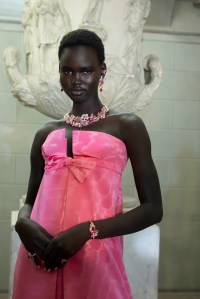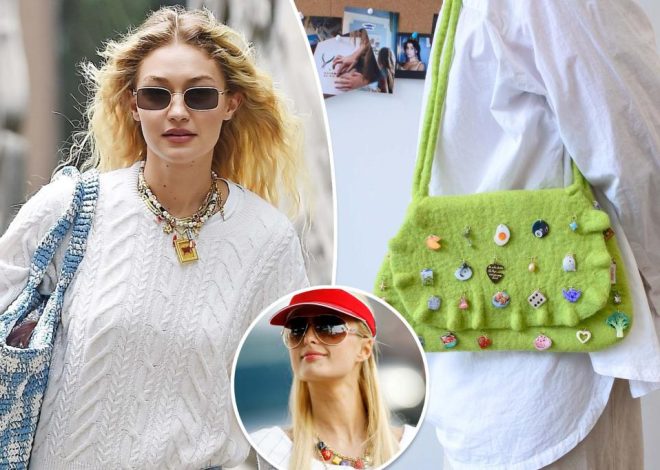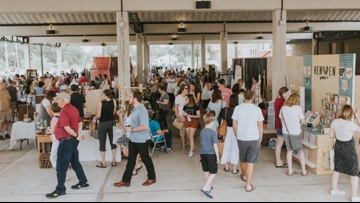
A dazzling journey of fine jewelry through vintage accessories offered at Nagel Auction | Auctions News | THE VALUE
Fitting with the recent booming nostalgic trend, this season Nagel Auction’s offerings bring us on a historical journey of fine jewellery – from 18th-century neoclassical tiaras, to Roaring Twenties’ Art Deco jewellery, to the Disco era’s extravagant hippie bracelet.
Also not to be missed is a series of never-before-publicly-seen Dutch Golden Age master paintings from the collection of Ferdinand III Mülhens, the great-grandson of the founder of the world-famous fragrance brand 4711.
On this occasion, let us take a walk down the memory lane laden with bountiful diamonds and the glory days of Flemish and Dutch masters.
Lot 19 | A rare classical tiara with diamonds
Germany, ca. 1825
C. 21 ct. diamonds, 585 gold and silver
Provenance:
- Old Private Collection, Munich
Estimate: €12,000 – 18,000
A jewel epitomising royal splendour, a tiara was not simply a headdress, but a statement. Its tradition began during the Greek and Roman empires when garland-like hair ornaments were given to athletes and warriors to honour victories and worn by high-rank people as status symbols.
Following the rise of Christianity and the fall of the two empires, the wearing of wreaths and classical diadems declined and nearly vanished for more than a century; it was until the 18th century that tiaras indeed became a staple accessory for royals, aristocrats and socially ambitious elites – thanks to Napoléon I.
After the French Revolution, as the new French ruler sought to present his court as the grandest in Europe – and to draw himself to the ancient emperors of the past – when he was crowned, he commissioned several diamond-encrusted head jewellery for his wife, Joséphine.
And Empress Joséphine was somewhat of a late-18th-century influencer: very soon, the noblewomen of the French court began to follow her neoclassical suit, as did the rest of the grand houses of Europe.
Jacques-Louis David (1748-1825) | The Coronation of Napoléon, oil on canvas, 1805-07 | Collection of the Louvre
Joséphine wearing a diamond pediment tiara
Well into the 19th century, tiaras remained a key part of an aristocratic or wealthy woman’s attire. It was often worn first for a wedding, then regularly at high society galas or any formal occasions as a badge of affluence and status.
With the advent of World War One, the popularity of tiaras gradually waned as society evolved. Besides social and economic changes, it was because women had started to cut their hair short, and the introduction of shampoo meant there was less ‘grip’ for a tiara to keep in place.
While falling out of fashion for decades, they survived as the prerequisite of Queens, princesses, and Hollywood starlets, most frequently given their moment in the spotlight at Royal weddings.
Today, tiaras are enjoying a remarkable resurgence at auctions, highly sought-after by jewellery connoisseurs who wish to crown their collections with a statement jewel full of history and heritage or to start a new family heirloom.
The present tiara can be transformed into a necklace
A piece comparable to the present diadem
Made in Germany circa 1825, the present tiara represents the antiquity-inspired style that was all the rage across European courts throughout the Napoleonic period.
Lavishly mounted with over 250 diamonds totalling around 21 carats, it is formal and symmetrical in design, decorated with motifs taken from classical antiquity, including palmettes and leaves.
As difficult to wear as it may seem, it is incredibly versatile and can be worn not only as a headpiece for white-tie dinners or weddings, but can also transform into a necklace for semi-formal events, such as the opera or a black-tie party.
A piece comparable to this diadem was made by the Stuttgart court jeweller Heinrich August Kuhn in the 1880s for Queen Pauline of Württemberg. It is now in the collection of the Württembergisches Landesmuseum in Stuttgart.
Lot 60 | A magnificent Art Deco aquamarine bracelet
New York Oscar Heyman & Brothers, dated 5 Nov 1929
Platinum marked and signed Pat Nov 5-1929. The classically austere Art Deco form. Set with 23 aquamarines in rectangular cut ca 37.5ct and 36 brilliants and 12 octagonal diamonds total ca.2.0ct TW/VVS-VS.
Estimate: €40,000 – 45,000
During the Roaring Twenties, when the neoclassical tiaras took a back seat, taking centre stage was the Art Deco, an all-compassing design movement that responded to a widespread desire for order in the wake of chaos after World War One.
First exhibited in Paris in 1925 at the Exposition Internationale des Arts Décoratifs et Industriels Modernes, the Art Deco style was the visual embodiment of modernist ideals, celebrating technology’s triumph and the hope for an optimistic future fuelled by innovation and engineering.
To make a clean break from the past, Art Deco jewellers rejected the fluid lines, nature-based motifs and excessive ornamentation of previous decades, instead opting for geometric designs, streamlined silhouettes, and bold colour combinations.
Oscar (left) and his brother Nathan Heyman (right)
Exemplifying the Art Deco style, this bracelet crafted by New York fine jeweller Oscar Heyman & Bros. in 1929 is dominated by geometric elements such as rectangular-cut aquamarines, octagonal diamonds, and structural platinum links – all set in a repeating pattern that responds to the machine age.
Oscar Heyman & Bros. is widely known as the “Jeweler’s Jeweler”, a title earned while creating pieces for famed jewellery retailers such as Cartier, Van Cleef & Arpels, and Tiffany & Co..
The founders of the jewellery firm, Oscar and Nathan Heyman, were immigrants from Russia. Thanks to an apprenticeship at their great-uncle’s Fabergé workshop, they arrived in New York in 1906 with a skill that made them greatly desirable employees: they could work with platinum, a relatively new metal at the time.
Three years later, Oscar Heyman won recognition from Pierre Cartier and became the first non-French jeweller to work in Cartier’s New York workshop. In 1912, as the whole Heyman family moved to New York, the brothers decided to run their own business.
Since then, they have been creating magnificent pieces of jewellery using the finest gemstones worldwide. Each piece of jewellery is signed and numbered, guaranteeing the craftsmanship and quality that has distinguished Oscar Heyman for over 100 years.
Lot 107 | A magnificent diamond cocktail ring
Paris Maison Cartier, ca. 1960
750 gold, signed, 40 brilliants ca. 3.2 ct.
Estimate: €35,000 – 40,000
Around the same period, as the “New Women” of the Jazz Age began to challenge their traditional role in the home and society, the cocktail ring emerged as an emblem of female independence and empowerment.
The 1920s America was the period of the nationwide constitutional ban on alcoholic beverages. Yet, instead of a sober nation, prohibition led to secret cocktail parties and speakeasies associated with illicit drinking, socializing, and glamour.
Having the same fun as a man could, women at the time would dress up, smoke, and sip sumptuous cocktails at glam parties, all the while showcasing their flamboyant and oversized gemstone rings to flaunt their rebellious act.
Unlike the traditional wedding band or eternity ring, the cocktail ring is typically worn on the right hand, signalling that she was a self-sufficient woman who bought the ring with her own money.
The cocktail ring offered this time was made in around 1960 by Paris Cartier. On the yellow gold ring were 40 exquisite brilliants, totalling 3.2 carats.
Lot 114 | A fantastic Cartier brilliant collier
Paris Maison Cartier, ca.1997 – model “Panthere”
750 white gold, 492 brilliants, ca. 12.5 ct., TW/vvs-vs, with original case
Provenance:
- Private collection, Rhineland-Palatinate
Estimate: €60,000 – 80,000
Another vintage jewellery from Cartier is the “Panthere” necklace set with 492 diamonds from circa 1997.
Arguably the Maison’s most iconic mascot, the panther made its debut as a spotted motif on a women’s watch in 1914. A symbol of feminity and independence, the feline struck just the right note in early-20th-century Paris, where women embraced freedom and adventures.
Over the years, the motif has evolved into many different forms, from abstract to graphic and naturalist. The present necklace belongs to the Maillon series, characterized by rectangular chain links that incite Cartier’s rhythmic geometry.
An abstract interpretation of the big cat, the bracelet slinks onto the skin in a rippling elegance, its ultra-flexible structure echoing the panther’s movements, its strength and its nonchalance.
Lot 108 | Extravagant vintage diamond gold bracelet
New York Tiffany & Co.
Design by Jean Schlumberger, ca. 1970
750 yellow gold ca. 100g., signed Tiffany/Schlumberger
Estimate: €23,000 – 25,000
Fast forward to the 1970s, jewellery designs from this era were all about hippie maximalism and free-spirited glamour. By then, the Western world had resumed order from wars, and it was when the disco era swung in.
Jewellery from this ‘groovy’ decade was to stand out under the flashing lights and pulsing beat on the dancefloor. Other than oversized hoop earrings and statement necklaces, a huge fashion trend at the time was chunky, gold gypsy bracelets.
Designed in the 1970s by leading 20th-century jewellery designer Jean Schlumberger, this extravagant warm gold bracelet captures precisely the boho chic of the era, while striking a perfect balance between opulence and refinement.
Dubbed “one of the most talented artists of the 20th century” by Tiffany & Co., Jean Schlumberger was born into a prominent family of textile manufacturers. In 1937, fashion designer Elsa Schiaparelli learned of Schlumberger’s artistic genius, and invited him to lead design for her collections of buttons and costume jewellery.
In his 50s, Schlumberger was asked by Walter Hoving, then Chairman of Tiffany & Co., to join the company as Vice President. A special design studio and salon were decorated to the designer’s specifications. With an unlimited supply of the finest coloured stones at his fingertips, Schlumberger created some of his career’s most incredible jewellery designs, such as the innovative use of twisted 18k yellow gold seen on the present lot.
Lot 117 | A very fine pearl and diamond collier-de-chien by Georg Hornemann
C.1995 750 gold, pearls, 121 brilliants, ca. 9,3ct. TW/if-vvs
Provenance:
- Rhenish private collection
Estimate: €35,000 – 40,000
An interesting piece on offer is a splendid eleven-row collar with pearls and diamonds, a custom-made accessory from the workshop of the Düsseldorf goldsmith Georg Hornemann.
One of Germany’s most celebrated jewellers, Georg Hornemann could be most aptly described as an intellectually restless artist. Instead of a single style, Hornemann’s complex oeuvre is of such variety and versatility that it is almost impossible to categorise.
Nearly 70 years since he was first apprenticed to a goldsmith in his birthplace in East Germany, he still leads the jewellery house he owns with his son, maintaining a reputation with jewellery of peerless craftsmanship, aesthetic refinement, and a fusion of artistry.
This glamorous collar, commissioned by its original owner, serves as a testament to his ability to work in a different genre with various precious materials, including gold, pearls, and diamonds.
Also under the spotlight at Nagel’s upcoming auction is a fresh-to-market collection of Dutch Golden Age paintings assembled by Ferdinand III Mülhens, the great-grandson of the founder of the world-famous fragrance brand 4711.
Founded in 1792, the German brand 4711 is known as the origin of the category Cologne. Legend has it that that year, merchant Wilhelm Mülhens received a wedding gift from a Carthusian monk: the secret recipe of a “miracle water” that served both as external and internal medicine. Mülhens then opened a shop in Cologne and sold it as a health-boosting elixir that could be added to wine and beer.
Two years later, as the French military occupation began, all the houses in Cologne were ordered to be numbered. The place where Mülhens ran his business was numbered 4711, and that has stuck ever since.
In 1810, some years after Napoléon reigned, the Emperor commanded that the ingredient list of oral medications must be made public. And thanks to Napoléon, again, Mülhens decided to market his elixir as a refreshing fragrance instead, so that the secret recipe could be kept safe. From there onwards, that same formula has been used for its iconic Original Eau de Cologne up till now.
Ferdinand III Mülhens
The great-grandson of the legendary Wilhelm Mülhens, Ferdinand III Mülhens, was a quiet lover of 17th-century art, particularly fond of Flemish and Dutch master paintings.
He began building his collection during the peak period of the old master market, from the 1960s to the early 1980s. He would frequent the great art centres of Europe for “treasure hunts”. Jan van Goyen’s Extensive River Landscape, for instance, was acquired at the Alfred Brod Gallery in London in 1980.
Lot 757 | Jan van Goyen (Leiden 1596 – The Hague 1656) | View into an extensive river vally, Oil on panel
Signed and dated 1639
26.5 x 44 cm
Provenance:
- Dr. Azam Collection, Bordeaux
- Sale F. Muller & Co, Paris, Dec. 1909, no. 33
- Sale Amsterdam, Nov. 1910, no. 46
- Alfred Brod Gallery, London
- Ferdinand III Mülhens Collection, Cologne, Dec. 1980
Estimate: €40,000 – 60,000
The Dutch Golden Age is one of the most critical periods in European art history. During the 17th century, driven by new freedom from Spanish Catholic rule, the Dutch Republic saw an influx of trade and experienced a surge in economic and cultural prominence.
With the explosion of wealth, there was a rise of a large, wealthy middle class such that buying art was no longer the preserve of kings, queens and religious orders: everybody with money to spare was at it. Against this backdrop, the genre of landscapes thrived, emphasising the indigenous features of Dutch villages, rural life, and seascapes as local scenery asserted Holland’s national pride.
Born in Leiden – where Rembrandt was also educated and started his artistic career – Jan Van Goyen is well-known for his broad scope of landscape subjects, including forest, marine, river, beach, winter, city, and architectural views – and the list of painters he influenced is much longer.
Due to financial constraints, Van Goyen would work very fast, using thin pigments of only one main colour tone, characteristically neutral greys, umbers, ochre and earthen greens. This monochrome palette brought a new colouristic and atmospheric unity to the landscape, pioneering the style of what is today as ‘tonal paintings’.
Lot 756 | Aelbert Cuyp (Dordrecht 1620 – 1691) | River landscape in the evening light, Oil on cradled oak wood
48.5 x 73 cm
Provenance:
- John Henderson, London, 1882
- H.J. Pfungst, London, 1904
- J.J. van Alen, “Rushton Hall”, Kettering, London
- The van Alen Family, “Wakehurst”, Newport, Rhode island
- Galerie J. Kraus, Paris
- Collection Ferdinand III Mülhens, Köln
Estimate: €40,000 – 60,000
His influence on the use of tone is visible in the early works of Aelbert Cuyp, such as this Extensive River Landscape at Sunset, which Mülhens purchased from the Galerie J. Kraus in Paris.
A leading Dutch Golden Age painter, Aelbert Cuyp was born into an artistic family, his uncle and grandfather both stained-glass cartoon designers, his father a portraitist.
During his brief two-decade creative career, he made a name for himself with his extensive views of Dutch riverside scenes in a golden early morning or late afternoon light, distinguished for the poetic use of light and atmosphere.
In this work, he captures a scene on the river bank, a few dark, ruffled clouds still a reminder of the storm that has just passed. Above the far riverbank, the low sky reveals the last streaks of sunlight, the sails of the fishing boats are furled, the water is completely calm, a light haze rises from the river.
Lot 759 | Simon de Vlieger (Rotterdam 1601 – Weesp 1653) | A jetty with a rowing boat and fishermen, Oil on oak panel
34.5 x 26.5 cm
Provenance:
- Ferdinand III Mülhens Collection, Cologne
- Sale A. Lehmann, Paris, Galerie G. Petit, 12.6.1925, lot 293
Estimate: €25,000 – 30,000
Also inspired by Van Goyen, Simon de Vlieger is another notable representative of the tonalist style. Displaying a highly reduced colour palette, his observations of coastal scenes established him as the master of marine paintings.
Adopting an unusual upright format, this work consists mostly of an ethereal sky at dawn, with the upper dark clouds casting shadows on the lower water’s edge. Here, he elevates the main motif of the Mnizech marine, the landing stage equipped with a sea mark and rowing boats, to an independent and form-determining object.
Lot 753 | Sebastiaen Vrancx (Antwerp 1573 – 1647) | View of a village landscape, Oil on wood
47 x 68 cm
Provenance:
- Collection Ferdinand III Mülhens, Cologne
Estimate: €15,000 – 20,000
Since its purchase by Mülhens, presumably in the 1970s, the unsigned painting was considered a work by Abraham Govaerts, a Flemish painter specialising in small cabinet-sized forest landscapes.
After viewing the original, Dr. Ursula Härting, an expert with the auction house, has rejected this attribution and sees the excellently preserved panel in the circle of the Antwerp painter Sebastiaen Vrancx.
On the left, between two groups of trees, a couple can be seen coming from the village green. She is carrying two baskets, the brim of her hat pulled low over her forehead; he is shouldering a heavy load from his forehead to his back, his nose is bulbous. Sheep and pigs graze in the meadow. The pigs are long-legged and pointy-nosed: all these motifs are characteristic of many figures by Vrancx, including many that his collaborators and his circle have carried on.
Auction Details:
Auction House: NAGEL Auktionen Stuttgart
Address: Neckarstrasse 189-191, 70190 Stuttgart, Germany
Sale: 816 | Fine Arts & Antiques
Preview Date and Time: 3 – 6 November 2023 | 11am – 5pm (German Local Time)
Sale Date: 8 – 9 November 2023
Website: www.auction.de
E-mail: [email protected]
Tel: +49 711 649 690 / +852 6919 1741
Online catalogue: https://www.auction.de/auktion-816_tag-1/
Online registration: https://nagel-live.de/#/


